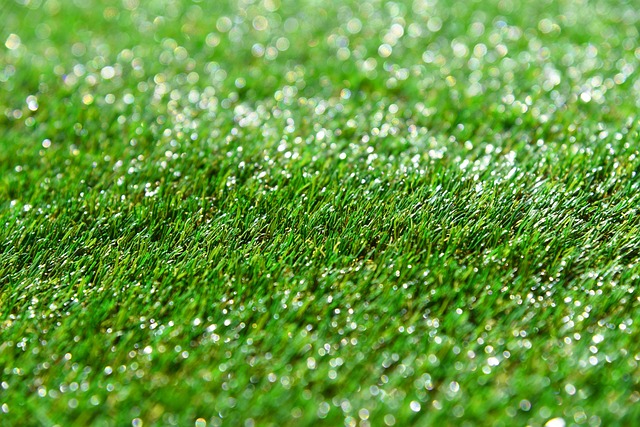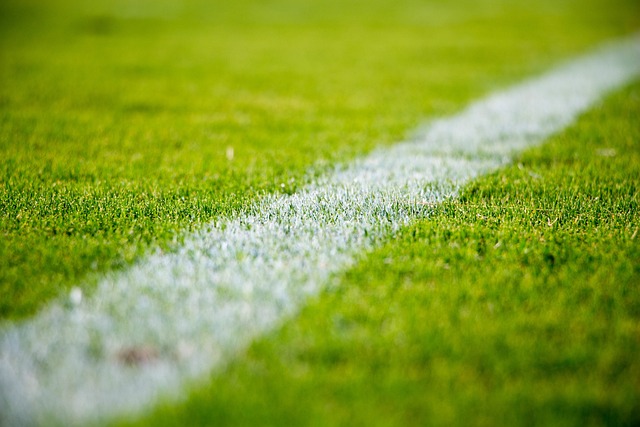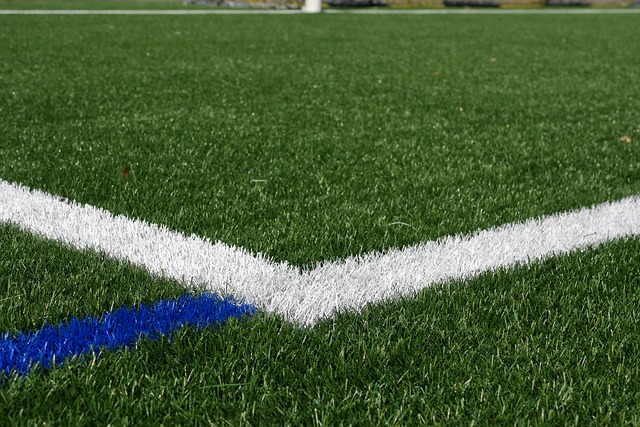Artificial grass has transitioned towards greater sustainability, incorporating recyclable materials and reducing reliance on water and chemicals for maintenance. This evolution aligns with global eco-friendly practices, conserving resources and offering a sustainable option for both residential and commercial landscapes. The latest synthetic turf designs focus on eco-friendly fibers and backings that are durable and easy to recycle. Infill materials have diversified to include safe alternatives like sand, rubber, or coconut fibers, significantly lowering the environmental impact compared to traditional crumb rubber. Proper installation practices involve using recycled materials for the subbase, sustainable and environmentally safe infill, efficient drainage systems, and locally sourced materials to minimize emissions and waste. These measures not only promote environmental health but also extend the turf's lifespan by preventing damage from standing water. The industry has embraced recycling programs and renewable energy sources in production, further emphasizing its commitment to sustainability. Artificial grass, particularly in regions like San Diego and in educational sectors, has proven to be a cost-effective and resource-efficient alternative to natural grass, contributing to urban sustainability objectives and environmental goals through reduced water consumption, decreased reliance on chemicals, and the potential for material repurposing or recycling.
artificial grass has revolutionized landscapes, offering a low-maintenance alternative that conserves water and reduces the need for chemicals. This article delves into the eco-friendly evolution of this versatile surface, highlighting its benefits made from sustainable materials. We’ll explore best practices for installing these systems to maximize their environmental advantages, examine their lifecycle impact, and discuss how innovations in recycling and renewable energy are further greening artificial turf. Real-world case studies will showcase practical applications of eco-conscious artificial grass, underscoring its growing role in sustainable practices.
- The Eco-Friendly Evolution of Artificial Grass: Benefits and Materials
- Installation Best Practices for Sustainable Turf Systems
- The Lifecycle of Artificial Grass: Environmental Impact and Maintenance
- Innovations in Artificial Turf: Recycling and Renewable Energy Use
- Case Studies: Real-World Examples of Eco-Conscious Artificial Grass Applications
The Eco-Friendly Evolution of Artificial Grass: Benefits and Materials

In recent years, artificial grass has undergone a significant transformation towards sustainability, reflecting a broader shift towards eco-conscious living. Modern synthetic turf is designed with environmental stewardship in mind, incorporating recyclable materials and reducing the use of water and chemicals typically associated with natural grass maintenance. These advancements not only conserve resources but also provide a low-impact alternative for both residential and commercial landscapes, ensuring that the aesthetic appeal of lush greenery can coexist with environmental responsibility.
The evolution of artificial grass is marked by innovation in materials that mimic natural grass without the environmental footprint. Manufacturers are increasingly utilizing eco-friendly fibers and backings that are not only durable but also easier to recycle. Infills, which are the materials on top of the turf blades, have also seen a shift towards sustainable options such as sand, rubber, or even coconut fibers, all of which are non-toxic and contribute to less environmental impact compared to traditional infill materials like crumb rubber. This commitment to sustainability ensures that artificial grass remains a viable option for those seeking to balance functionality with ecological consciousness.
Installation Best Practices for Sustainable Turf Systems

When installing environmentally friendly artificial grass, or sustainable turf systems, it is imperative to adopt best practices that minimize environmental impact while ensuring longevity and performance. Proper subbase preparation is crucial; ensure a well-draining base layer to prevent waterlogging, which can be achieved using recycled materials where possible. The infill used in these systems should be environmentally safe, typically made from rubber or sand derived from sustainable sources. This infill not only provides stability and cushioning but also reduces the need for chemicals that could leach into the soil.
In addition to careful subbase preparation and eco-friendly infill selection, the installation process should prioritize water conservation. Permeable materials and efficient drainage systems can be integrated into the design to promote natural water flow and reduce runoff. This not only benefits the environment by mimicking natural water cycles but also extends the lifespan of the artificial turf by preventing premature wear caused by standing water. Furthermore, using locally sourced materials reduces transportation emissions, further contributing to the sustainability of the installation. By adhering to these best practices, the environmental footprint of artificial grass installations can be significantly lessened while maintaining a durable and attractive surface for recreational or landscaping purposes.
The Lifecycle of Artificial Grass: Environmental Impact and Maintenance

Artificial grass, also known as turf, presents a sustainable alternative to natural grass in various settings, from residential backyards to commercial sporting facilities. The production process of artificial grass involves recyclable materials and energy-efficient manufacturing techniques that reduce its environmental footprint compared to traditional lawns, which require frequent mowing, watering, and fertilizing. Over its lifecycle, artificial turf minimizes the need for water, chemical treatments, and maintenance-related emissions from lawn care equipment, offering a significant reduction in greenhouse gas emissions.
Maintenance of artificial grass is designed to be low-impact; it eliminates the need for harmful pesticides and fertilizers that can run off into waterways, causing environmental contamination. Manufacturers often incorporate recyclable components into their products, ensuring that at the end of its useful life, the turf can be repurposed or recycled effectively. Regular cleaning with eco-friendly detergents and occasional infill replacement maintain the turf’s integrity without introducing harmful substances into the environment. The longevity of artificial grass also contributes to a lower environmental impact over time, as it does not need to be replaced as frequently as natural grass, thus reducing waste associated with disposal and reseeding.
Innovations in Artificial Turf: Recycling and Renewable Energy Use

Artificial grass has come a long way in terms of sustainability, with innovations focused on reducing its environmental impact. The recycling of old artificial turf is a significant step forward, as it mitigates waste and promotes circular economy principles. Manufacturers are now designing synthetic grass products with end-of-life considerations in mind, ensuring that materials can be reclaimed and repurposed. This approach not only conserves resources but also diminishes the carbon footprint associated with the disposal of these materials.
In parallel with recycling efforts, the energy required to produce artificial turf is being sourced from increasingly renewable origins. Solar panels and wind turbines are becoming more commonplace in the production facilities of artificial grass manufacturers. This shift towards renewable energy is a testament to the industry’s commitment to reducing its carbon emissions and moving towards more sustainable practices. The integration of green technology within the manufacturing process not only contributes to environmental conservation but also positions artificial turf as a leader in eco-friendly landscaping solutions.
Case Studies: Real-World Examples of Eco-Conscious Artificial Grass Applications

In recent years, artificial grass has gained popularity as an environmentally friendly alternative to natural grass in various applications. One notable example is the city of San Diego, California, which has implemented artificial turf in its public parks and playgrounds. This initiative not only conserves water, a precious resource in the region, but also reduces the need for fertilizers and pesticides that are commonly used to maintain natural grass. The synthetic fibers used in these turfs are designed to mimic the look and feel of real grass without the intensive care, thus promoting sustainability and minimizing environmental impact.
Another case study lies within the educational sector, where institutions have adopted artificial turf fields for sports activities. For instance, a university in the Midwest replaced its natural grass athletic fields with eco-friendly artificial turf. This change led to a significant reduction in water usage and maintenance costs, while also providing a safe and consistent playing surface for students throughout the year. The recyclable materials used in these turfs further contribute to their environmental benefits, as they can be repurposed or reused after their initial lifespan, reducing waste and the demand for new resources. These real-world examples underscore the potential of artificial grass to offer practical solutions that align with eco-conscious principles and urban sustainability goals.
In conclusion, the evolution of artificial grass into an environmentally friendly alternative has been a significant stride towards sustainable landscaping solutions. The careful selection of materials and adherence to best practices in installation have made turf systems more eco-conscious than ever before. The lifecycle analysis reveals that with proper maintenance and innovative approaches like recycling and renewable energy integration, artificial grass can contribute positively to environmental conservation. Real-world case studies underscore the practical benefits of these advanced turf systems, showcasing their potential to revolutionize both urban and rural green spaces. As this industry continues to innovate, it is clear that artificial grass, or turf, will play an increasingly vital role in our efforts to harmonize human needs with ecological integrity.
